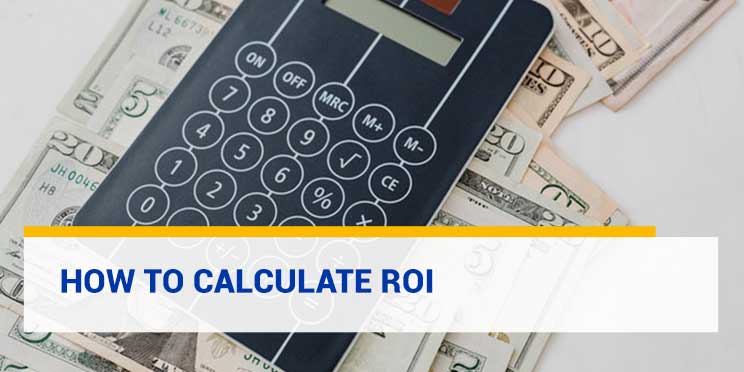When running a business, knowing how to calculate ROI is critical. Make sure to perform the ROI calculation as shown below!
Every businessperson should know how to calculate ROI as a reference to determine the level of business profit that is being pursued. The computation of ROI is a standard for assessing businesspeople’s performance in employing capital to make profits.
Calculating the ROI of your investment can be used to determine the potential of a firm if you are an investor. This article will define ROI, explain how to calculate Return on Investment (ROI) in marketing, and provide other relevant information.
Understanding and Calculating ROI (Return on Investment)

ROI is the profit or loss generated by an investing activity as a percentage of the money invested.
Understanding how to calculate ROI is useful for determining the prospective return on investment. This is accomplished by directly calculating the amount of return on costs incurred.
While ROI estimates might help you understand your investment’s return, this tool does not incorporate value for money. ROI is a ratio, hence it is expressed as a percentage.
How can you determine the correct Return on Investment (ROI)? See the following topic for a continuation.
Here are Two Methods for Calculating ROI
The value of ROI is calculated by dividing the benefits or return on investment by the cost of the initial expenditure. The outcome is expressed as a percentage or as a ratio.
You have two mathematical ways for determining ROI at your disposal. Whichever approach you choose, the end outcome will be the same. Here’s an example of calculating ROI using both methods:
1. ROI Calculation Method 1
A formula like the one below can be used to calculate an effective ROI:
ROI = (Net Return on Investment / Cost of Investment) multiplied by 100%
Consider the following example of calculating ROI to better understand the application of the formula for calculating ROI with method 1.
You spend IDR 500,000,000.00 for a house. You sell the house for IDR 600,000,000.00 a year later. When selling a residence, you must pay a commission to the selling agent, letters, and other expenses totaling IDR 30,000,000.00.
Furthermore, when purchasing a home, you may borrow from a bank at a 20% interest rate, which translates to IDR 100,000,000.00 as the cost of your investment. Then, to determine the ROI of an investment, do the following:
(IDR 600,000,000.00 – IDR 500,000,000.00) – IDR 30,000,000.00 = IDR 70,000,000.00 Net Return on Investment
IDR 100,000,000.00 as an investment fee
So, The ROI formula is as follows: (Net Return on Investment / Investment Cost) x 100% = (IDR 70,000,000.00 / IDR 100,000,000.00) x 100% = 70%
2. ROI Calculation Method 2
This method calculates the Return on Investment of SMEs by comparing the initial and final investment values relative to the investment costs. The following is the formula:
ROI = [(Final Investment Value – Initial Investment Value) / Investment Cost] multiplied by 100%
Using the same image as in method 1, the following components are explained in method 2:
- The amount of money you first invested is referred to as the initial investment value. The initial investment value in the example is IDR 500.000.000,00.
- Final Investment Value is the selling price minus the costs of the transaction.
In the example, you sell a house for IDR 600.000.000,00 while incurring IDR 30.000.000,00. in expenses.
The total investment value is then IDR 600.000.000,00 – IDR 30.000.000,00 = IDR 570.000.000,00.
The total cost of your investment is IDR 100.000.000,00.
The following is how to calculate ROI using method 2 based on the data above:
ROI is calculated as [(Final Investment Value – Initial Investment Value) / Investment Cost] x 100% = [(IDR 570.000.000,00 – IDR 500.000.000,00) – IDR 100.000.000,00] x 100% = 70%
The two procedures are distinct, but they yield the same ROI value. You are free to utilize whichever way is most convenient for you.
What are the benefits of knowing the ROI value to a business? Find out what the answer is down below.
Here are 5 Benefits of Using ROI (Return on Investment)

ROI value can be used to monitor and assess a company’s performance. The following are some of the benefits of employing ROI analysis in your organization.
1. Can Measure Market Competition
How to Calculate Return on Investment enables you to compare multiple projects and then select the best one. The ROI formula is also beneficial for determining the faults and strengths of the firm you manage in comparison to other companies.
2. Simple and Effective
It is quite simple to determine the return on investment. The calculation does not necessitate the use of hundreds of data sheets or a complex system. The computation of ROI is simple, even for those who do not have a background in finance.
3. Conducting Comparative Analysis
ROI can be used to compare the performance of different firms. Of course, comparisons are required in terms of asset usage and potential to generate profits.
ROI is a useful metric for comparing firms. The criterion is that the businesses are the same size and in the same industry. ROI will compare the cost of capital to choose which investment possibilities to pursue.
4. Measuring Business Efficiency
ROI can be used to assess the amount of performance efficiency inside an organization. Businesspeople can assess the effectiveness of their original and ongoing capital investments.
Based on the inputs and outputs, you can quickly determine the efficiency level of the production team. Calculating ROI from financial statements at manufacturing plants offers information on how efficiently production machines and tools, as well as raw materials, are used.
Most importantly, ROI can be used to assess the efficacy of sales operations. After reviewing the comparison in how to calculate advertising ROI, you can select the best marketing approach for maximizing advertising cost efficiency.
ROI comparison data is used by businesspeople to assess the effectiveness of initiatives in each division of the organization. The measurement procedure is carried out by transferring all capital to the appropriate division.
ROI analysis can be used to compare a company’s capacity to utilise capital efficiently versus that of other companies. The information displayed can be used to devise strategies for winning the competition.
ROI is used in business to determine the level of profit generated by the products produced. This is useful for deciding what products to develop next.
5. Factors to Consider When Planning Expansion
When a company wishes to expand its operations, ROI is critical as a decision-making tool (expansion). The corporation will take planned activities based on the ROI value displayed by each division.
In addition to its numerous benefits, ROI has some drawbacks that should not be overlooked. What are the drawbacks to estimating ROI?
Benefits of Using Calculate ROI
Profit is comprised of several components. Profit before tax, profit after bank interest, net profit after deducting fixed costs, and more expressions are available. The disadvantage is that ROI cannot accurately define profit.
When attempting to compare the ROI of numerous different organizations, you will encounter difficulties. Each organization being evaluated must utilize similar accounting and financial methodologies to determine ROI.
This means that all of these businesses must adhere to the same accounting principles and procedures. The same basis must be used for the valuation of fixed and moveable assets, the computation of shares, the profit-sharing scheme, and so on.
The SAP Business One application may be used to rapidly calculate ROI. Choose a reputable and accredited SAP ERP application supplier business, such as Sterling Team, to handle your financial programs. Please contact us straight away!


